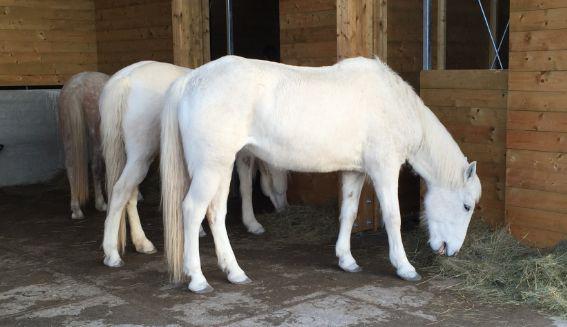

Visitors to the Škocjan Inlet on the Slovenian coast, not far from the town of Koper, often encounter an unexpected sight: a trio of free-roaming white horses. The animals, whose breed originates in the Camargue region of France, play an important role in the local ecosystem.
Despite their proximity to Koper and its large port, the wetlands of the Škocjan Inlet are home to a wide variety of plant and animal life, and for several years, the ecologically significant area has been protected on the national level. While much of the inlet has been left untouched, researchers have discovered that large herbivores in similar nature reserves increase the variety of plant life by limiting the growth of high grasses.
Several years ago, the managers of the Škocjan Inlet turned to a tried and tested solution: They brought in Camargue Horses, which originate in the Rhone Delta of southern France. In the delta, and in several other European wetlands, the free-roaming white horses play an important role in keeping the local ecosystems in balance by limiting the growth of grasses; the breed has developed the ability to graze effectively in wetland habitats.
Two Camargue horses were brought to the Škocjan Inlet in 2008. Their significance to the fragile wetlands became immediately apparent, and their introduction was ruled a success, but they also became popular among visitors to the area. In fact, the number of people visiting the Škocjan Inlet increased substantially after the horses made their home there. The public’s affection for the horses became evident in 2013, when someone attacked the animals with a machete and left them seriously wounded. For several days, people across the country followed media reports about their condition and their slow recovery. But the horses did recover and eventually returned to the inlet.
The nature reserve is now home to three Camargue horses as well as several heads of indigenous Istrian cattle that will help maintain the local ecosystem for decades to come.

































































